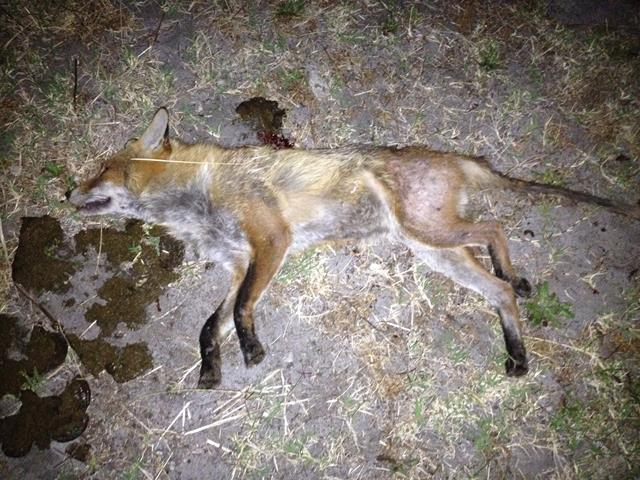Sarcoptic mange is a very common disease of mammals, being found in both wild and domestic animals. Sarcoptic mange is caused by the mite Sarcoptes scabiei. Mites burrow into the outer layer of the skin, forming tunnels into which they deposit several kinds of material (eggs, faeces, shed shell, digestive secretions) causing intense irritation to the skin. The mite life cycle lasts about two weeks and heavy infestations can build up rapidly.
Lightly infected individuals may suffer only short-term effects, whereas heavily infected individuals suffer from fur-loss and develop a thick crust of parasite wastage on the skin surface. (Ref; The Fox Website)
Effect on reproduction
Dog foxes with mange may find attracting a mate and competing with other males difficult. It may also effect sperm production due to loss of scrotal temperature control.
Vixens however are seriously effected by mange. Conception rate is lower. 1, 2 possibly 3 cubs conceived compared to average 6-7 in a healthy fox. Once born, the mangy vixen seems to be unable rear her cubs. She either eats them or abandons them. These conclusions are derived from an autopsy and observing the lactation status of vixens shot in early October.
Mangy and old foxes that have difficulty hunting, are known to eat manure to survive. Foxes seem to recover from a light infestation. A heavy infestation is likely to be fatal through starvation or hypothermia. Wombats are susceptible to Mange when foxes share their burrows.
In some states there seems to be areas that are Mange free. Only healthy foxes.

